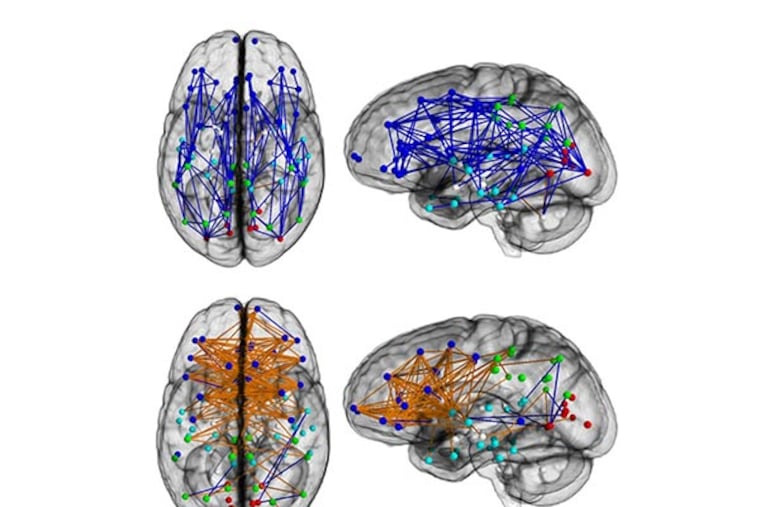Penn study: How women's brains differ from men's
Forget right-brain or left-brain thinking. What may be more important from a gender standpoint is back-to-front or side-to-side thinking.

Forget right-brain or left-brain thinking.
What may be more important from a gender standpoint is back-to-front or side-to-side thinking.
A new study from the University of Pennsylvania used diffusion tensor imaging, a type of brain imaging that shows how brain cells are connected, to study young men and women. The team's maps of major information highways were noticeably different for the two genders.
Men had more pathways that ran the length of each hemisphere, to parts within a hemisphere and across the cerebellum, which coordinates movement. Women had many more powerful communication links between the two hemispheres.
What this means is that, at any given moment, a woman is likely to be using her whole brain while a man is using half of his, said Ruben Gur, a neuropsychologist who was one of the study authors. He struggled when asked if this structure makes men superior at anything.
In fairness, he said, "each hemisphere is really a complete human being," so it's possible to function at a high level while using one hemisphere. It does mean, though, that men really are more likely to be right-brained (more intuitive) or left-brained (more logical) than women.
The strong link with the cerebellum might make men more action oriented, better at tasks that require quick response time or an "I-see-and-then-I-do" attitude.
The side-to-side thinking likely boosts women's memory and social skills and seems designed, the authors said, to combine analytical and intuitive thinking. Communication within the hemisphere facilitates connection between perception and coordinated action.
Ragini Verma, an associate professor in Penn's department of radiology, said the study, which was published Monday in Proceedings of the National Academies of Sciences, was the first to use this kind of imaging to compare connections within male and female brains.
The Penn team compared images from 949 normal youths, ages 8 to 22. The wiring diverged in adolescence.
Verma said the findings are averages. She is as curious as the rest of us about whether the brains of women in male-dominated fields or of gays look different somehow or whether the connections can change with time and particular kinds of practice. She doesn't know. She'd next like to study whether researchers can look at the images and figure out which gender is pictured.
She added that all of us have connections throughout all of our brains. Penn's work focused on how male and female brains are different. We have many connections in common. Her imaging maps show the big highways that differ between men and women. There are still some smaller back roads that can take information across, say, a man's hemispheres or throughout a woman's right hemisphere.
The connections between right and left let women's brains "more easily integrate the rational, logical, verbal mode of thinking and the more intuitive, spatial, holistic mode of thinking," Gur said.
Men, on the other hand, are more likely to be in one mode or the other. Gur said scientists don't know why men are more likely to use a particular side or even how to test whether you're a right-brained or left-brained guy.
He said women's thinking is likely to be more contextual. "Their brains are better connected between their decisions and their memories," he said. "For men, memories are memories. Decisions are decisions."
He didn't see anything in the new brain maps that would explain why men have dominated some scientific fields.
215-854-4944
@StaceyABurling